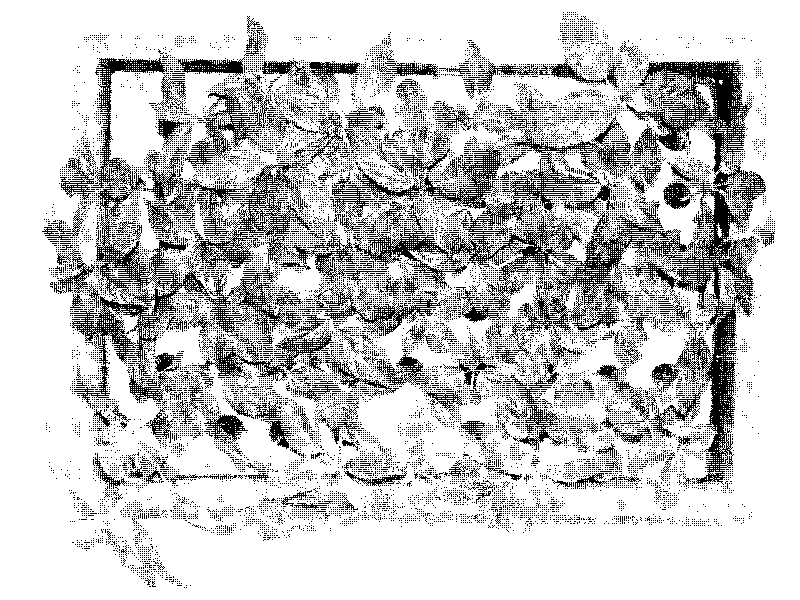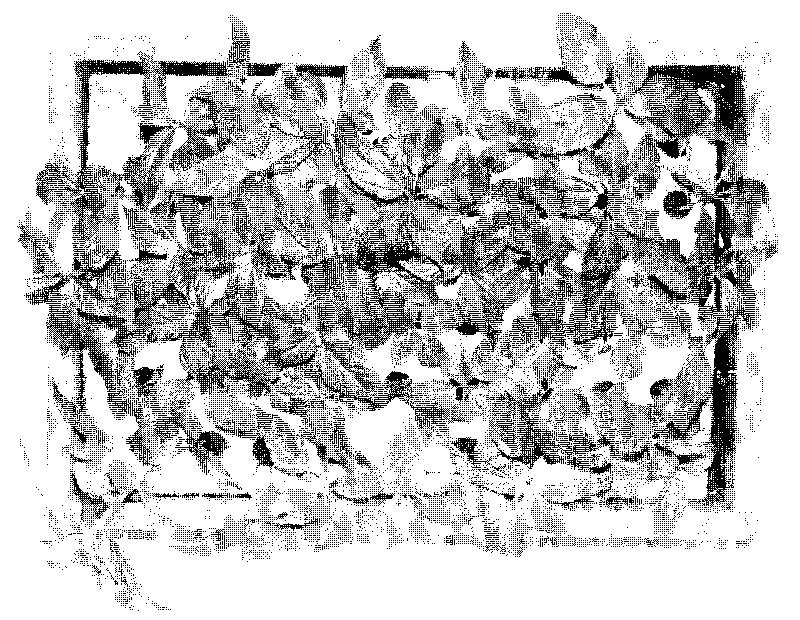Hydroponic method of jute
A jute and hydroponics technology, applied in jute hydroponics and jute hydroponics fields, can solve the problems of perishable roots, inability to recycle roots, and difficulty in obtaining neat and uniform seedlings, etc., so as to overcome the difficulty of root ventilation and improve the survival rate of seedlings , low-cost production effect
- Summary
- Abstract
- Description
- Claims
- Application Information
AI Technical Summary
Problems solved by technology
Method used
Image
Examples
Embodiment Construction
[0029] Plastic culture boxes with a length, width and height of 32, 22 and 7.5 cm were used as cultivation containers, and 3 L of hydroponic nutrient solution was injected into each pot, and a foam board with a thickness of 1.5 cm with holes and a length, width and height of 10 cm were used. , 1.0, 0.4cm sponge strips are seedling fixing substrates.
[0030] Before transplanting the seedlings, firstly, the seeds were placed in a sterilized Erlenmeyer flask, soaked and sterilized with 10% NaClO by volume for 10 minutes; secondly, washed 6 times with sterile water for 30 seconds each time; again, the Soak the seeds in sterile water at 28°C for 24 hours, then place the soaked seeds in a sterilized Petri dish lined with two layers of filter paper, add 5ml of sterile water, add water at intervals, and accelerate germination at 30°C , until it turns white and grows two cotyledons; finally, wrap the seedlings with uniform growth around the base with sponge strips, gently pick them up...
PUM
 Login to View More
Login to View More Abstract
Description
Claims
Application Information
 Login to View More
Login to View More - R&D
- Intellectual Property
- Life Sciences
- Materials
- Tech Scout
- Unparalleled Data Quality
- Higher Quality Content
- 60% Fewer Hallucinations
Browse by: Latest US Patents, China's latest patents, Technical Efficacy Thesaurus, Application Domain, Technology Topic, Popular Technical Reports.
© 2025 PatSnap. All rights reserved.Legal|Privacy policy|Modern Slavery Act Transparency Statement|Sitemap|About US| Contact US: help@patsnap.com


